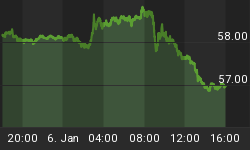The short and medium-term opinions of the investment advisors with free newsletters and web site market forecasts have moved predictably over this last week. A week ago the vast majority thought the market was becoming overbought and a majority predicted a pullback last week. The market continued upwards. Now it is definitely overbought, some say extremely overbought, so the majority is predicting an even greater chance of a brief pullback or sideways movement before further upside. However, having been caught on timing the pullback, this week very few are putting a date on it. Instead they are simply saying that the risk, generally for a short, sharp pullback, is greater, but after that the market is set to rally for a few more weeks, at least.
As a result, the opinions have been recorded as bullish instead of bearish for the short-term. Hence the FIFTI1 (Free Information From The Internet) Index from www.InvestorsInternet.com has jumped from a low 25% the prior weekend to 87% this last weekend. The medium-term FIFTI Index is largely unchanged at 85% compared to 81% the previous weekend. The investment advisors are still united in their opinions that the market can move higher in December.
The major indexes have risen with barely a down day since the middle of October. For example, the S&P 500 ($SPX) has risen for seven days into November 28th and has had only nine down days in the last 30. The momentum of the rally has surprised many investors who have been looking at indicators such as the Breadth, New Highs, New Lows and the Equity Put/Call Ratio. These indicators are nowhere near where they were in the June/July run up to the early August high. Furthermore there has been no pullback for those who waited to buy into the rally.
No market goes straight up for very long so nearly everyone is expecting a pullback, followed by further upside, at least over the next few weeks. The question is how much of a pullback? At what level is the bottom of the dip for buying into this rally?
The $SPX is certainly in a land of support and resistance. There are the prior highs of August and September, to say nothing of the last slight perturbation in the steep incline, in the 1,237 to 1,245 range to act as support.
If you believe in the value of trend lines, there are lines from March and August highs, and from the December and March highs, providing values today about 1,258 and 1,275. The index has exceeded one and is below the other.
If you prefer to follow Fibonacci the 61.8% retracement from the March 2000 high of 1552.87 to the March 2003 low of 788.90 is 1,261.03, always assuming that the market is in a larger timeframe decline from the year 2000 high.
Thus we have 1,275, 1,261, 1,258, 1,245, and 1,237 levels to watch. All of these levels are picked by various independent investment advisors with free newsletters and web site market forecasts as the likely support point for the S&P 500 when a pullback occurs. That tells us that expert opinions do not reckon on the pullback going lower - unless there is a trend change.
There has also been a significant change in the number of long-term bulls. During the week the Minutes of the Federal Reserve's last meeting were released. The Minutes were interpreted to mean that there is a greater chance that the Feds will stop raising rates sooner than expected. The prospect of fewer rate hikes in 2006 is good for the economy and the market. Adding to that good news were strong retail sales and improving consumer confidence. All of which make prospects brighter for 2006.
1The FIFTI Index is based on Free Information From The Internet, and in particular, on advice provided by fifty independent newsletter writers selected from the book "The Investor's Free Internet".
















